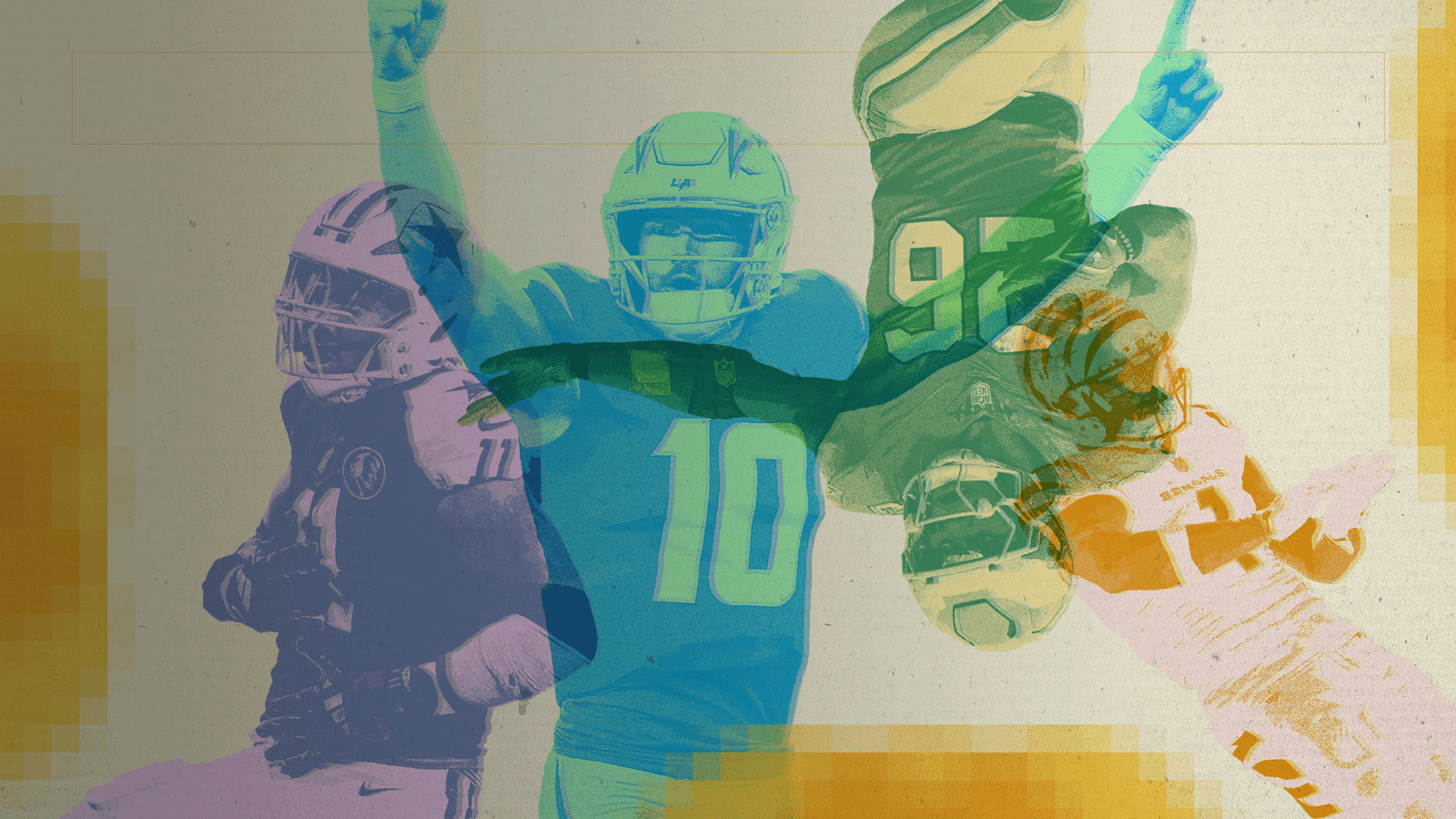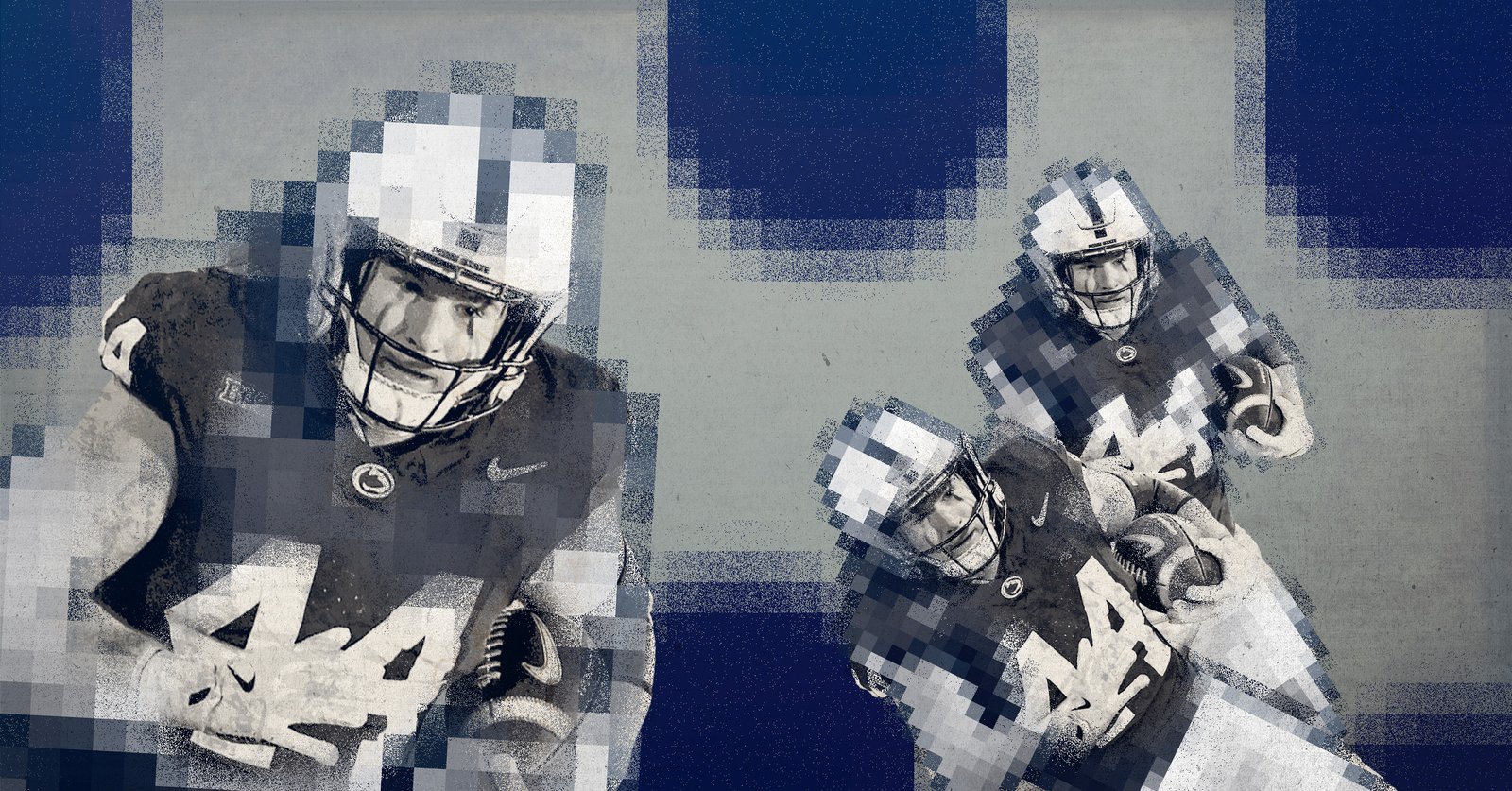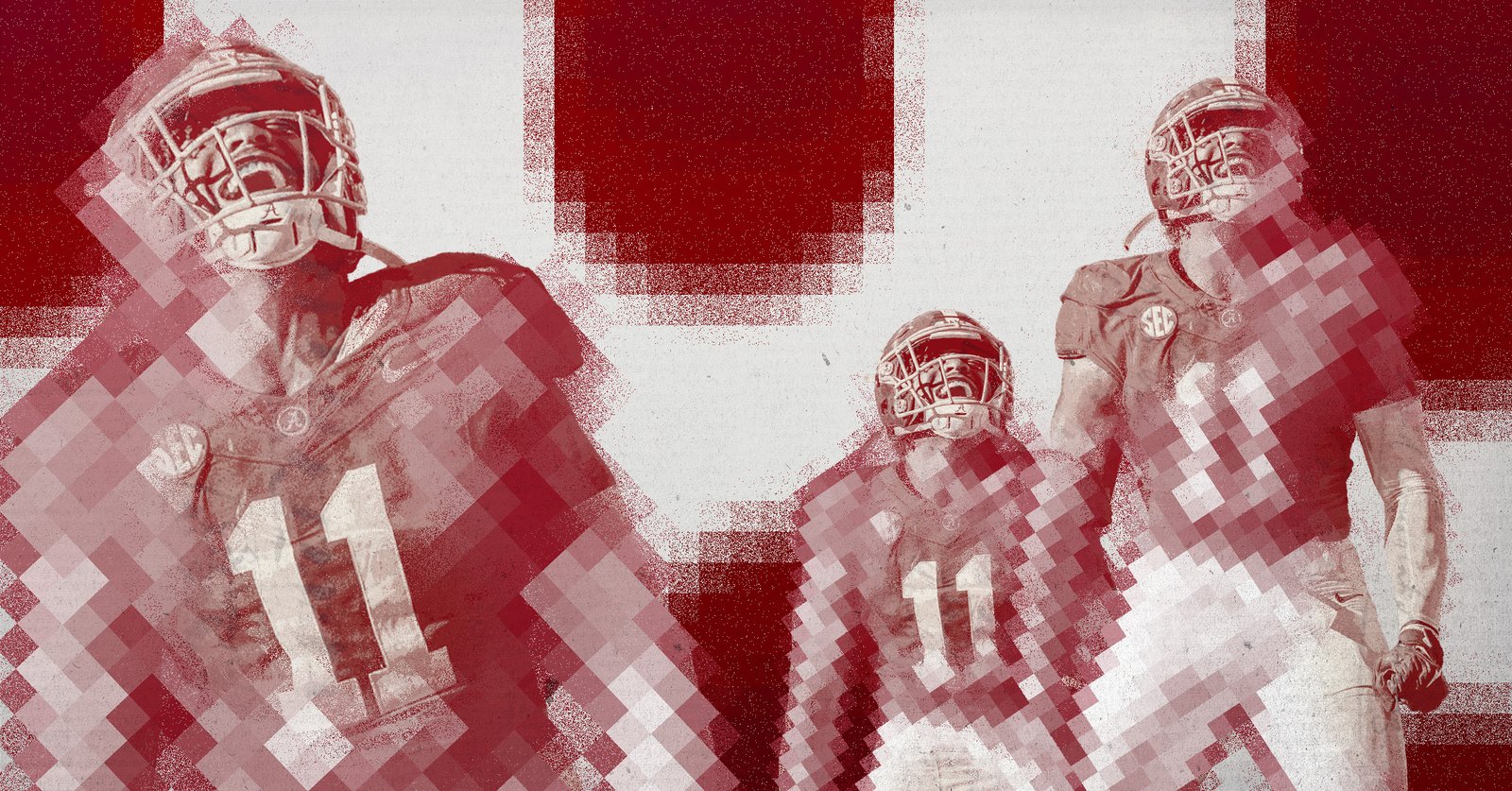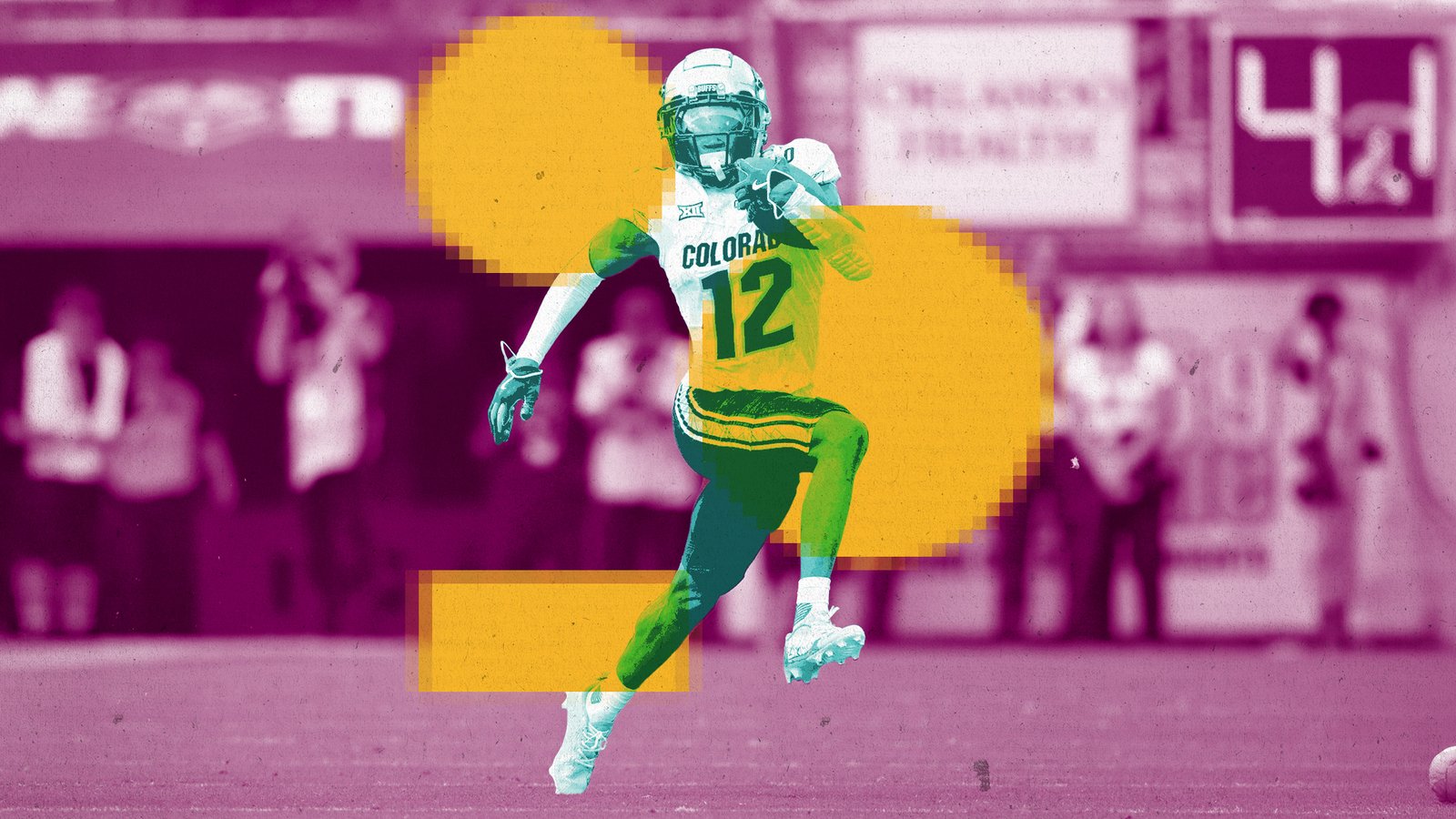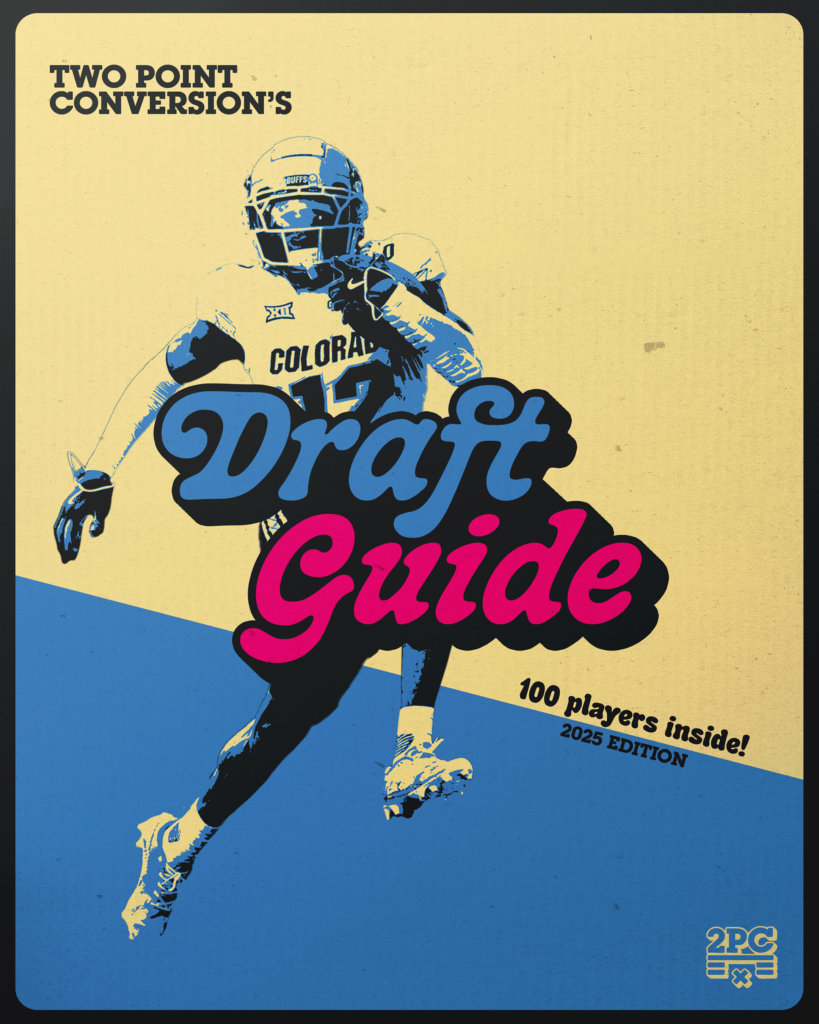While 2024’s rookie receivers outperformed expectations, we also saw a historic rookie performance last season from Las Vegas’ Brock Bowers. The year before that, we saw rookie tight end Sam LaPorta set the record for tight end receptions from a rookie (only for Bowers to break it). Have teams wised up to the idea that rookie tight ends can be productive – especially in the 2025 NFL Draft? I’m not so sure.
While Bowers (pick 13) and LaPorta (pick 34) have had blistering starts to their careers, other first round pick tight ends can’t necessarily say the same. Kyle Pitts (pick 4) started hot, but cooled off after a good rookie season. TJ Hockenson (8) and Noah Fant (20) also haven’t seen the success Bowers and LaPorta have. How will this year’s early tight ends compare?
Potential TE1s
These two tight ends have the chance to be difference-makers in the NFL. The offenses they land in won’t necessarily be built around them, but both players will have positive contributions in Year 1.
Colston Loveland, Michigan
There may not be a tight end in this class with a higher receiving upside than Loveland. The 2023 tape is incredible – he was the best player on an offense that didn’t suffer a loss all season. Despite quarterback turmoil this past season, Loveland still performed, putting the offense on his back at times. With reliable hands, an NFL frame, and route-running that’s still improving, the sky is the limit for Loveland.
Standing at 6’6” and weighing over 240 lbs, Loveland passes the NFL size threshold. Combining this size with crisp routes and nuanced movement is what makes Loveland dangerous. In the open field, Loveland does a good job of using his size to create space before the catch. With the ball in his hands, Loveland is tough to bring down, displaying good contact balance and strength to fight through tackles.
Loveland isn’t just a strongman, he has the speed necessary to run away from defenders and take passes to the house. The biggest knock against Loveland is that his blocking isn’t elite. However, I believe he’s just scratching the surface as an effective blocker. Loveland shows the effort and want-to as a blocker, the technique just needs refinement.
Overall, Loveland has a complete package to be a receiving threat early in his career. Despite already being one of the better players in college, Loveland will have just turned 21 on Draft Night. Tantalizing upside + proven production = a player that can have a positive impact immediately, and the potential to be one of the best receiving tight end options for a long time.
What Teams Need Him: Carolina Panthers, Indianapolis Colts, Seattle Seahawks

Tyler Warren, Penn State
While Loveland may be the high end receiver early in his career, Warren is the more complete tight end at the moment. A fifth year senior out of Penn State, Warren waited his turn behind NFL talent like Theo Johnson and Brenton Strange.
He emerged this season as one of the biggest mismatch options in the nation, amassing over 1400 scrimmage yards and 12 touchdowns. He should be an immediate Swiss Army Knife weapon in the NFL.
Warren should hit the ground running as a blocker. Combining his raw power and athleticism with technique that has improved throughout his time in college, Warren dominated defenders at the point of attack. Warren was everywhere as a receiver weapon for the Nittany Lions, lining up as the wildcat quarterback, taking handoffs, and even snapping the ball as a de facto center.
A lot of the more gimmick ideas won’t apply in the NFL, but using Warren’s unique skills few and far between can introduce positive wrinkles in an offensive game plan. Purely as a receiver, Warren is a problem – his size and sharp route running in the short/intermediate areas of the field make him a reliable safety blanket. He’ll have a floor as a quarterback’s best friend.
Overall, Warren is a pretty unique profile as a tight end prospect. It took Warren five seasons to break out, but once he did it was electric. Warren should immediately translate as a blocker and a short area receiving threat, with the upside of becoming one of the better receiving tight ends in the league. Hopefully Warren can land with a creative play designer that can maximize his unique traits.
What Teams Need Him: New York Jets, Chicago Bears, Indianapolis Colts
High Ceiling and/or High Floor Contributors
This group doesn’t have the same clear TE1 ceiling as the previous group. They should still be contributors in Year 1 of their rookie contracts, with the potential to be hit TE1 status on their respective teams.
Mason Taylor, Louisiana State
Some players in this class will be sold on potential, being only 21 years old on Draft Night. Mason Taylor will only be 20! Despite this, Taylor holds the LSU school record for receptions and yards at his position. The potential for growth and upside, and being already highly productive, should give Taylor a chance to get on the field early.
As a blocker, Taylor still needs work. He has the effort you want at the position, but needs to refine his technique and improve his physicality. Where Taylor shines is as a receiver, where he can use his athleticism to become a mismatch. Winning with his speed and twitch is one thing, but being a technical route runner is what really puts Taylor over the edge as a receiver.
Overall, Taylor definitely will have his fans in the league. He strong baseline and high potential should give him the opportunity to make play early in his career. If he continues to trend upwards, Taylor could be one of the best and most athletic tight ends in the league.
What Teams Need Him: Los Angeles Chargers, Los Angeles Rams
Best of the Rest
This group of tight ends may not have high TE1 potential, but can have roles early in their careers as auxiliary receiving options and effective blockers in 12 (1 running back, 2 tight ends) personnel schemes.
Harold Fannin Jr, Bowling Green State
All of the previous tight ends may have been productive, but none of them (or any FBS tight end ever) have had the season Fannin had in 2024. Bringing in over 110 receptions, over 1500 yards, and 10 receiving touchdowns, Fannin was the entire Bowling Green offense this season. Getting open and moving after the catch is Fannin’s specialty, he would routinely generate YAC for his offense.
Overall, Fannin has shown that he can produce, even against high-level competition. And yet, while Fannin would generate 15-20 yard plays in the blink of an eye, it felt like he could’ve gone for 30-40. I’m not sure how to evaluate the yards left on the field when Fannin consistently went for positive gains. If Fannin produces like he did this season, the yards left on the field will hardly matter.
What Teams Need Him: Seattle Seahawks, Kansas City Chiefs
Elijah Arroyo, Miami
When the network shows Cam Ward’s highlights on Draft Night, you’re likely to see Elijah Arroyo doing a lot of the heavy lifting after the catch. Arroyo is a speedy, twitchy tight end that can take passes to the house. This high-level speed, combined with fluid movement, gives Arroyo a high ceiling as a special pass catcher.
Overall, while most tight ends early in their careers are used underneath and in the short area of the field, Arroyo’s speed allows him to be a true deep threat, a rarity at his position. He has a long way to go as a blocker, but Arroyo should be able to get snaps as a field-stretching pass catcher early in his career.
What Teams Need Him: Carolina Panthers, Cleveland Browns, Chicago Bears
Mitchell Evans, Notre Dame
If I had to choose a sleeper in this draft class, it would be Mitchell Evans. Despite being sidelined by injury multiple times in his career, Evans returned to the field better and stronger each time. Every time Evans touched the ball this season, something positive happened. Whether it was breaking tackles or breaking through defenders as a blocker, Evans was a big part of why Notre Dame reached the CFP National Championship.
Overall, Evans is a player I’d be willing to hang my hat on as a GM. He is a reliable blocker, especially in one-on-one scenarios. He won’t be a huge YAC machine, but Evans boxes out defenders to win contested catches. The resilience Evans showed is something I would bet on, and if a team takes that bet, they’ll end up with a workhorse that can have a positive impact on offense and on special teams.
What Teams Need Him: Kansas City Chiefs, Cincinnati Bengals
Terrance Ferguson, Oregon
Forget finesse or twitch, Ferguson just uses strength to dominate. His large frame and reliable hands should make him a safe target early in his career. Ferguson’s strong hands also make him a good blocker, particularly in the run game. He can clamp down on defenders and shut them out of the play. Strong blocking is an asset many NFL teams covet, and should help Ferguson to see the field early in his career.
Overall, Ferguson can bring it as a blocker. While this will be the trait that gets him on the field early, Ferguson has some untapped athleticism as a receiver as well. If the team that drafts him prioritizes development, they could end up with a contested catch nightmare in Ferguson.
What Teams Need Him: Carolina Panthers, Atlanta Falcons

